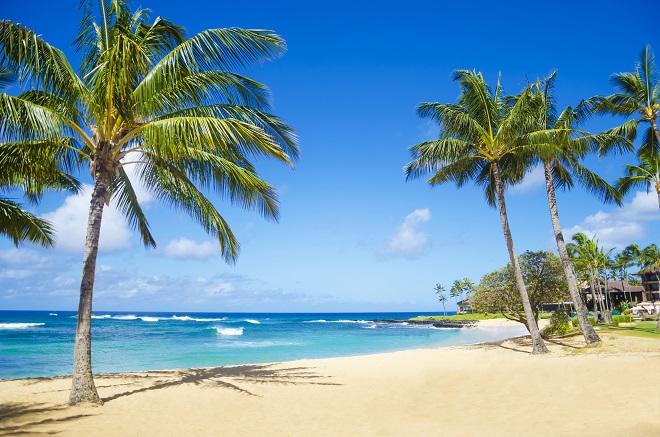One of the best qualities of hiking is access. In this blog, A Beginner’s Guide to Hiking, we’ll show what is needed to get started, in terms of both equipment and skills. At its most basic, hiking remains an enjoyable walk in the woods and more you hit the trail, the more you’ll want to know and prepare for having a good time while hiking. Maybe you’ll even want to level up your skills for longer or more difficult trails — which often have a payoff of solitude, amazing views and natural wonders.
If you’re a beginner hiker who has taken the first few hikes and you’re ready to tackle more challenges, you may wonder what you should do next. These tips, tricks and suggestions will help you as you grow into an avid hiker — consider this your beginner’s guide to hiking!
The product links in this blog are associated with our Amazon Affiliate Link program and we may receive compensation from their use. We do appreciate your support!
Invest in a good pair of hiking boots or shoes
When people first hike, they often wear whatever shoes they already have — an old pair of running shoes or sneakers works perfectly fine for a short hike on even terrain. As you step onto more challenging trails, specialized footwear will really help. From extra traction to ankle support, the right shoe or boot will improve your hiking experience!
With hiking boots, you’ll find tons of brands not to mention a wide range of costs. From cheap shoes to thousand dollar boots, you may wonder which pair will be the right fit. Given the great brands out there, I advise beginner hikers to stay away from the cheap boots; often they don’t hold up to abuse, and will end up in the garbage before you’ve gotten your money’s worth. Worse yet, they may cover your feet with blisters. That doesn’t mean you have to buy the most expensive hiking footwear either.

Starting out, you’ll want something made with quality, but that isn’t cost-prohibitive. Keen, Teva, and Ridgemont Outfitters all make good, entry-level hiking boots and shoes, but don’t limit your search to only a few brands. If possible, go to an outfitter, like a REI store or a local shop, where a salesperson will help you select and try on several pairs. While you can never tell how a boot will feel after you’ve broken it in, you can at least get a sense of the fit while walking around the store
Don’t forget socks
You probably have a lot of cotton socks in your drawer, but you don’t want to wear them while you’re hiking. Why? Cotton absorbs moisture, and during a long day of hiking that moisture will get very uncomfortable in your boot.

Instead, look for moisture wicking synthetics or merino wool when it’s cold out. You may even want to consider a sock liner under your socks to help optimize moisture wicking and to avoid blistering. Just remember to factor in your socks and liners when buying your hiking boots. Take the socks you plan to wear hiking with you when you try on boots, so you can get an idea of how everything fits together.
Carry a water source

One of the most important things you can take with you is a water source. Whether you use a hydration pouch like those from CamelBak for hands free drinking or carry a Nalgene during your hikes, you want to make sure you have an ample supply of water. Dehydration poses serious risks, so drink often and stop anytime that you feel thirsty and have water. If you plan on taking longer treks where you won’t be able to carry all the water you need, you’ll want to invest in a water purification system. The Sawyer Mini is an inexpensive but reliable choice for those starting out.
A good backpack will make a world of difference

On your first few hikes you may have slung an old backpack on to carry a few things with you. While that’s good enough to get you through a couple of short hikes, when you add mileage and more difficult terrain, you’ll want a great day pack to carry your essentials. As with your boots, you have a lot of great brand options, and no limit on style!
I recommend investing in something with waist and sternum straps to help distribute weight off of your shoulders for a more comfortable hiking experience. If you prefer to drink from a hydration pouch, make sure that your chosen pack will accommodate it.
Carry a first aid kit
You don’t need a large EMT med-kit, but carry a small first aid kit with you while you’re on the trail. You probably won’t use it much — and that’s a good thing – but you want to make sure you have it when you need it!

The most common ailments you’ll likely have include blisters, insect bites or stings, and small cuts or scrapes. You can find small first aid kits made for hikers in stores or online. I recommend adding moleskin (used for treating blisters), a small amount of duck tape (tear off a strip and fold it into a small, nearly flat roll), a tick key for tick removal, and a mylar emergency blanket. The emergency blanket will be small and lightweight enough you won’t even notice it, but if you ever get caught in a downpour and get too cold, you’ll be glad you brought it!
Learn to prevent and care for blisters
If you find yourself with a blister and you keep hiking with it, you’ll end up with a lot of discomfort or even an infection. The best thing you can do when you get a blister is to cut a small donut-shaped piece of moleskin, and adhere it so that the blister is in the center of the donut hole. Then place a bandage over the blister and moleskin. The debate wages on about whether you should drain a blister, but I don’t recommend doing it while out hiking, as it can more easily become infected that way. Unless it’s exceptionally large or painful, I don’t drain blisters until I’m home.
Preventing blisters is always preferable to treating them. This goes back to your boot and sock selection. You want to avoid excess moisture and chafing. Try to break your boots in on shorter hikes before taking them on long treks. If you notice hot spots where it feels like your boot or sock is rubbing, stop and check it out, and consider bandaging the area.
Dress in layers
The best way to dress for hiking involves layering. Especially in cold weather, you will be much better off if you wear multiple layers as opposed to one thick coat. That way, if you build up a sweat, you can remove a layer to prevent sweating. Consider wearing moisture wicking synthetics or wool. Mostly you should avoid cotton, as it doesn’t insulate when wet and takes too long to dry.
In warmer weather I recommend lighter clothing, but still consider a breathable outer layer that adds a little warmth if you stay out longer than expected, in case of changes in the weather, or in case you catch a chill. You may also want to bring along a light rain jacket or poncho if you expect any rain — you can add an inexpensive rain poncho to your kit for under $10.
Check the map and trail description
When you start out, you’ll probably explore short trails. As you become more proficient and hike longer and more challenging trails, always check a map and trail description. If possible, try to find out what the current trail conditions are like. Though you need not become an expert navigator, I would recommend familiarizing yourself with basic topographical maps — or at least a simple trail map — and carrying a compass.
If you have even the most rudimentary understanding of how to use these tools, they can help you figure out where you are, where you’re headed, and how much further you’ve got to go.
When in doubt, bail out
Beginner hikers often make the mistake of biting off more than they can chew. It’s understandable — you spend so long waiting to hike a trail, you spend the money to get there, and you don’t want to let a little inclement weather stop you from enjoying yourself.
It’s fine to push yourself, but you always want to stay safe. If you’re feeling fatigued, dehydrated, or just not right, it’s okay to turn back and hit the trail again on another day. If the weather turns bad or trail conditions prove more challenging than expected, you can always try again another day. Don’t risk injury trying to hike in a dangerous situation. When in doubt, bail out!
Leave no trace
Leave No Trace Principles are a must when you’re out on the trail. Beginner hikers may not be familiar with this philosophy, but at these principles provide a guide for sustainable outdoor recreation that minimizes impacts caused by humans. Most of the Leave No Trace Principles are common sense, but review the Seven Principles before you hit the trail.
Don’t forget the odds and ends
Depending on where you are, you’ll probably want a few extras like sunscreen, insect repellant, and sunglasses during your hike. Snacks always make a trek a little more enjoyable, and I always carry a little bottle of hand sanitizer. These things aren’t always necessary, but trust me; the time you forget to pack the sunscreen will probably be the day you need it the most.
Have fun
The most important thing you need to do when hiking is have fun. When you’re starting out as a beginner hiker, you may want to push yourself farther and explore more challenging trails, but hiking isn’t a competition or a race. Hike your own hike, take as much time as you need, and stop to enjoy the scenery. Because the ultimate goal of hiking should be to have a great time.
No matter your skill or experience level, hiking is a great way to spend your day. Beginner hikers can use the suggestions in this post to help take the next steps in conquering longer trails and more difficult terrain — but don’t forget to have fun! Wherever you are, and wherever you may go next, happy trails.


We’re happy to have Wade back and look forward to more of his work at The 55 Lifestyle! Feel free to check out his previous blog on Visiting National Parks.
Wade Ellett runs Intrepid Daily, a website devoted to helping people lead more adventurous lives. He recently moved to Spearfish, SD where he spends his time exploring the Black Hills National Forest with his wife and dog, and enjoying South Dakota’s six national parks and NPS managed sites.
The 55 Lifestyle is a participant in the Amazon Services LLC Associates Program, an affiliate advertising program designed to provide a means for sites to earn advertising fees by advertising and linking to Amazon.com.








